Standing on the trail that circles Beaver Lake in Stanley Park on a soggy February afternoon, interpretive guide Candice Campo explained some of the healing and practical uses of just one of the many trees we passed while on our walking tour.
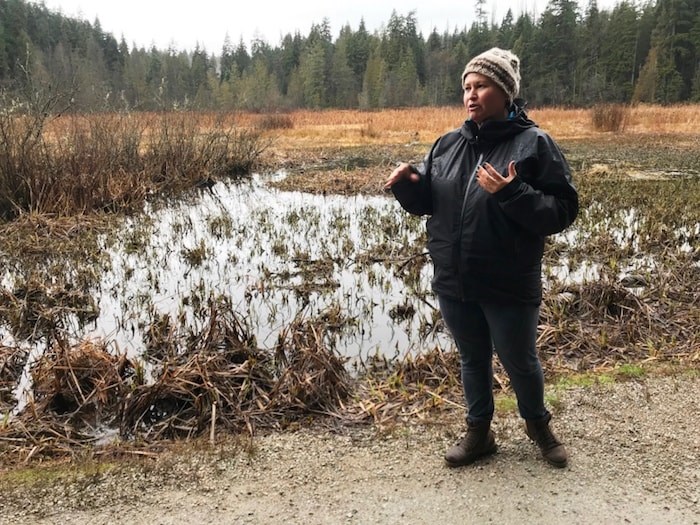 Talaysay Tours co-owner Candice Campo stands near Beaver Lake in Stanley Park during the Talking Trees tour. Photo Sandra Thomas
Talaysay Tours co-owner Candice Campo stands near Beaver Lake in Stanley Park during the Talking Trees tour. Photo Sandra Thomas
As Campo spoke, a small bird flittered over and settled briefly on her hand before darting away. Moments later, as Campo moved along the trail, a black squirrel scampered along a tree branch over her head, while a flock of several dozen small birds briefly surrounded her before flying off. It was a scene straight out of the fairy tale Cinderella and, for a brief moment, I expected small woodland animals and birds to surround Campo and begin making her a dress out of the surrounding foliage.
Instead, Campo and guide Alfonso Salinas continued to educate our group about how vital indigenous trees and plants were to the survival of the First Nation peoples of southern B.C. The Talking Trees walk is just one of the activities offered by Talaysay Tours, founded in 2002 by Campo whose ancestral name “xets’emits’a” translates to “to always be there,” along with her husband Larry Campo and brother Jonathan Clark Sr., whose ancestral name is “Tecumseh.”
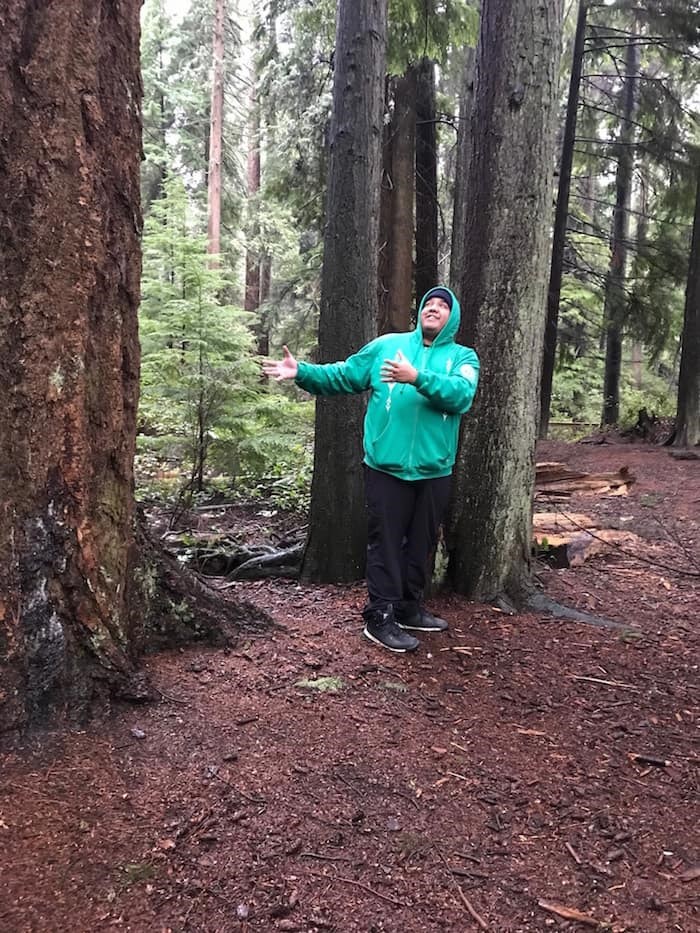 Talaysay Tours guide Alfonso Salinas kept us entertained with stories of the past during our Talking Trees tour of Stanley Park. Photo Sandra Thomas
Talaysay Tours guide Alfonso Salinas kept us entertained with stories of the past during our Talking Trees tour of Stanley Park. Photo Sandra Thomas
Clark and Candice Campo, who follow a matriarchal system, are members of the Wolf Clan, in xenichen (Queens Reach at the head of Jervis Inlet) through their grandmother and identify with their grandfather’s clan muyuk (grizzly bear) of tsunay (Deserted Bay).
Campo, who trained as an anthropologist and school teacher, shares the outdoor education and culture she learned while growing up on the land — and being taught the stories and history of her people by her parents and elders in the community.
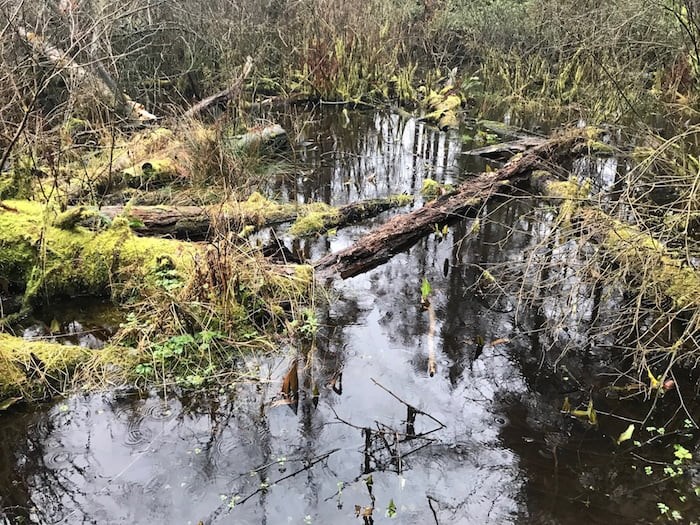 As part of the Talking Trees tour, we learned Coast Salish people use moss in many ways — both historically and today. Photo Sandra Thomas
As part of the Talking Trees tour, we learned Coast Salish people use moss in many ways — both historically and today. Photo Sandra Thomas
Campo is a head kayak guide, storyteller and educator-facilitator at Talaysay Tours and during the school season, works with both educators and students teaching First Nations history, ecology, kayaking, canoeing, cultural protocols and art.
Through often humorous stories, Campo and Salinas educated us about how every tree and plant is deemed sacred, in part because they supported local Indigenous societies for generations.
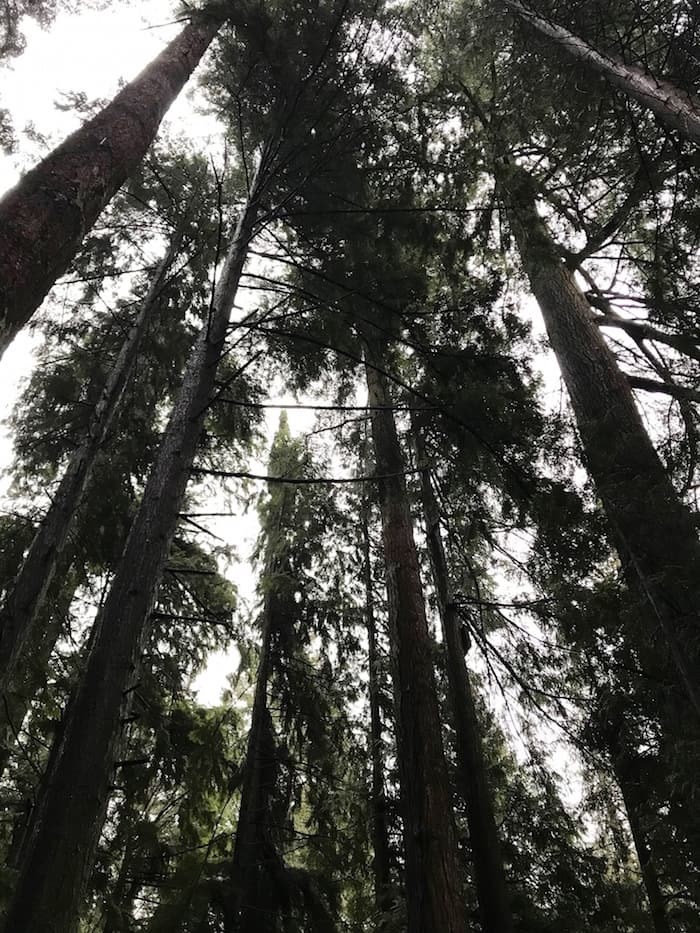 Just some of the massive trees still standing in Stanley Park, which give up their secrets during Talking Trees tours. Photo Sandra Thomas
Just some of the massive trees still standing in Stanley Park, which give up their secrets during Talking Trees tours. Photo Sandra Thomas
As we walked, we learned the medicinal and practical uses of the bark, sap, leaves and roots of many of the trees and plants in Stanley Park, including centuries-old red cedars, Douglas fir trees and berry bushes, all of which have been historically harvested by Skwxu7mesh Uxwumixw — Coast Salish people — for food, medicine, art, lodging and canoe building.
Halfway through the tour, Campo also served us a traditional tea made from Indigenous ingredients, which we enjoyed both for its taste and warmth on such a damp, drizzly day.
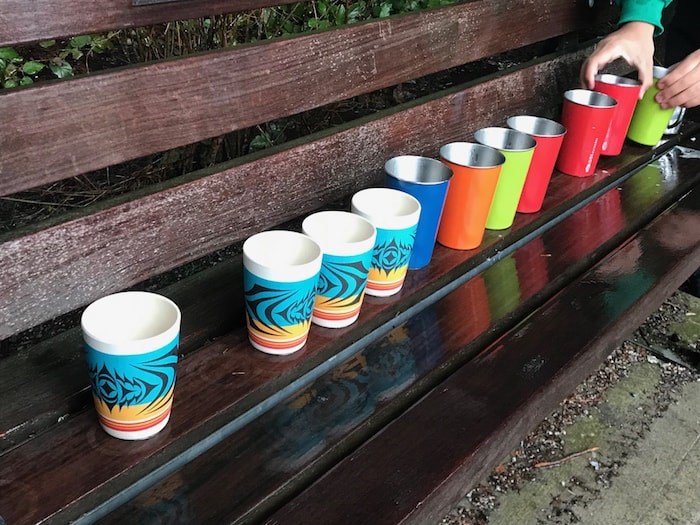 Halfway through our Talking Trees tour of Stanley Park we were served an herbal tea made from Indigenous ingredients. Photo Sandra Thomas
Halfway through our Talking Trees tour of Stanley Park we were served an herbal tea made from Indigenous ingredients. Photo Sandra Thomas
Near the end of our tour, Campo stopped by the tall trunk of a tree, which was weeping a light grey sap from its bark, and had each of us scrape off a tiny piece to smell and taste. Campo then explained how important these trees were to relatives and friends of hers who were forced into the residential school system.
“This sap is also a form of nutrition. I was very fortunate to be born in ’73 and I did not go to residential schools,” said Campo. “I was very lucky, but some of my older cousins and older friends did and they said they used to sneak out of the residential school into the forest and eat the sap.”
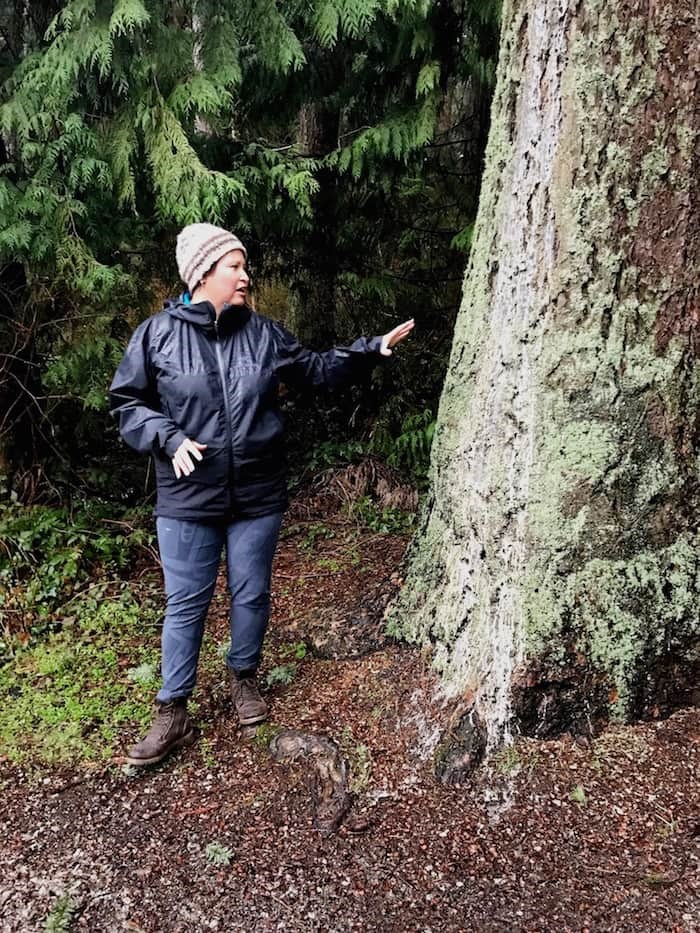 Talaysay Tours co-owner Candice Campo points to the type of tree sap that helped some of her friends and relatives survive residential school. Photo Sandra Thomas
Talaysay Tours co-owner Candice Campo points to the type of tree sap that helped some of her friends and relatives survive residential school. Photo Sandra Thomas
Authentic cultural and eco tours are offered by Talaysay Tours in Vancouver, Squamish and the Sunshine Coast rain or shine — after all, we do live in a rain forest. The Talking Trees tour is also available from  resort as a package, which includes a one-night stay and three-course Indigenous-inspired dinner.
As part of my media tour, we had the opportunity to try some of the Indigenous-inspired dishes from at the Fairmont, including oyster and herring row with a kelp, hemlock and eucalyptus emulsion and this elk tartar with elderberries, blackberries, hazelnuts and bone marrow sabayon.
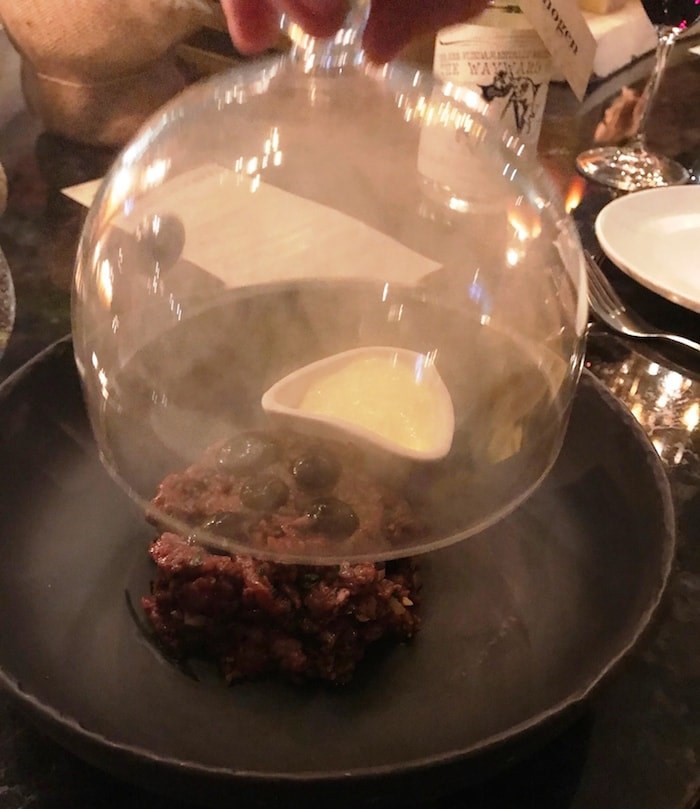 Elk tartar served with smoke under glass at ARC at Fairmont Waterfront. Photo Sandra Thomas
Elk tartar served with smoke under glass at ARC at Fairmont Waterfront. Photo Sandra Thomas
For a main course we enjoyed West Coast salmon kedgeree served with a "63 degree egg" and madras curry veloute.
Talking Trees tours run almost year round, while the is on until March 31, 2019.
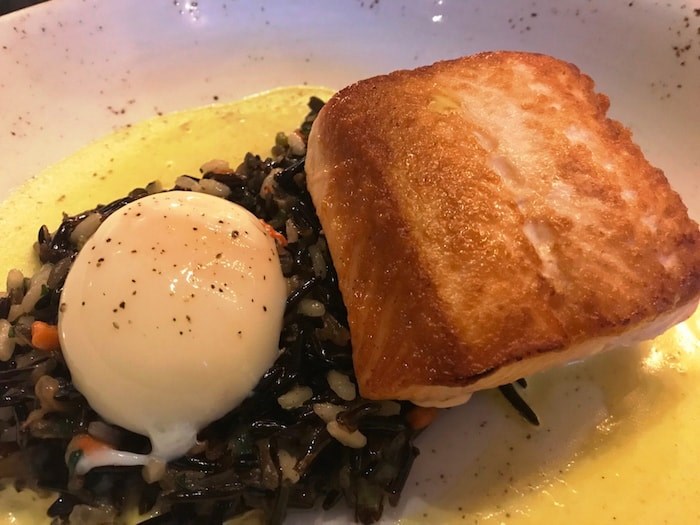 West Coast salmon kedgeree served with a madras curry veloute at ARC at Fairmont Waterfront. Photo Sandra Thomas
West Coast salmon kedgeree served with a madras curry veloute at ARC at Fairmont Waterfront. Photo Sandra Thomas


